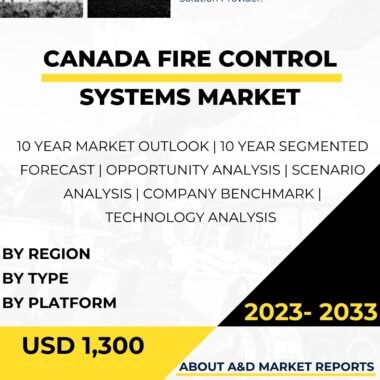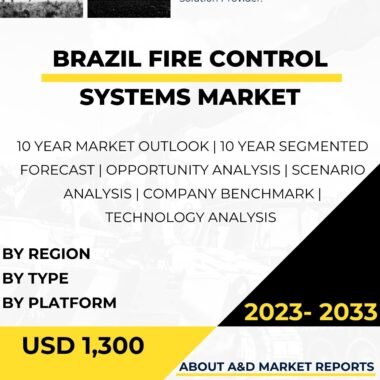Description
The Fire Control Systems market in Malaysia has witnessed significant growth and development in recent years, reflecting the country’s commitment to modernizing its defense capabilities and enhancing its military readiness. Fire Control Systems are critical components of various weapon systems, providing precision targeting and accurate engagement of targets for the Malaysian Armed Forces.
One of the primary drivers of the Fire Control Systems market in Malaysia is the government’s recognition of the importance of advanced targeting capabilities in modern warfare. As a strategically located nation in Southeast Asia, Malaysia faces diverse security challenges, including territorial disputes and regional tensions. The ability to accurately engage targets is crucial for its defense forces to maintain a strong and credible deterrent.
The integration of Fire Control Systems into Malaysia’s defense strategy offers several advantages. These systems enhance the accuracy and effectiveness of weapons, improving the probability of successful engagements while minimizing collateral damage. Fire Control Systems enable the Malaysian Armed Forces to conduct precise targeting in various operational environments, ranging from land-based operations to naval and aerial engagements.
Moreover, Fire Control Systems play a crucial role in enabling multi-platform coordination. These systems facilitate the integration of sensors, radars, and targeting data from various platforms, allowing for effective joint operations and information sharing between different branches of the military.
The Malaysian government has recognized the importance of international collaborations in acquiring and implementing Fire Control Systems. Partnerships with leading global defense companies and technology providers have facilitated access to state-of-the-art Fire Control Systems and expertise. These collaborations have enabled technology transfer and capacity building, contributing to the growth of Malaysia’s domestic Fire Control Systems capabilities.
Furthermore, Malaysia has been actively investing in local research and development (R&D) initiatives to foster indigenous Fire Control Systems technologies. By encouraging homegrown innovation, Malaysia aims to achieve self-reliance in Fire Control Systems and strengthen its defense industrial base.
While the Fire Control Systems market in Malaysia shows promise, it is not without challenges. One of the primary hurdles is the high cost of developing and acquiring advanced Fire Control Systems. These cutting-edge technologies require significant investment in research, development, and testing. Budget constraints may impact the pace and scale of Fire Control Systems acquisition and development efforts.
Moreover, the rapidly evolving nature of technology presents challenges for Fire Control Systems. As adversaries develop and employ advanced countermeasures, the defense industry must continuously innovate to maintain the effectiveness of Fire Control Systems.
Additionally, Fire Control Systems must meet stringent safety and reliability standards. The military relies on these systems for precise targeting, and any failure or malfunction could have severe consequences. Ensuring the robustness and resilience of Fire Control Systems is critical to maintaining operational readiness.
Looking ahead, the Fire Control Systems market in Malaysia is poised for further growth. The government’s commitment to modernizing the armed forces and adopting advanced defense technologies will drive continued investments in Fire Control Systems. As Fire Control Systems continue to evolve and demonstrate their effectiveness, they are likely to play an increasingly vital role in Malaysia’s defense strategy.
Moreover, Malaysia’s participation in regional security collaborations and military exercises will likely influence its Fire Control Systems requirements. As the country seeks to strengthen its position as a key player in regional security and defense cooperation, the demand for advanced Fire Control Systems with interoperability and compatibility with allied forces will increase.
In conclusion, the Fire Control Systems market in Malaysia has experienced significant growth and progress. The government’s focus on modernizing its defense capabilities and investing in advanced technologies has paved the way for the integration of Fire Control Systems into its military strategy. International collaborations and domestic research efforts have positioned Malaysia as a participant in the global Fire Control Systems landscape.
However, challenges related to budget constraints, evolving threats, and technology innovation must be addressed proactively to sustain and enhance the growth of the Fire Control Systems market in the years to come. By maintaining a strong and capable Fire Control Systems capability, Malaysia can effectively enhance its military readiness, precision targeting capabilities, and overall security posture.




